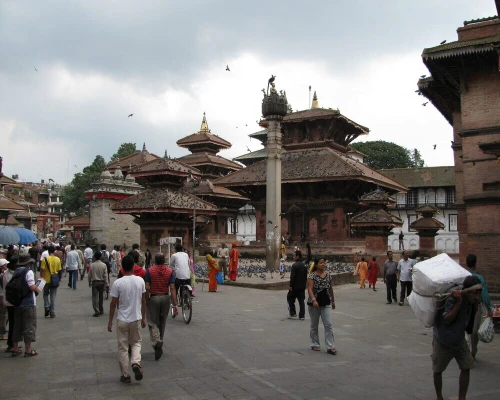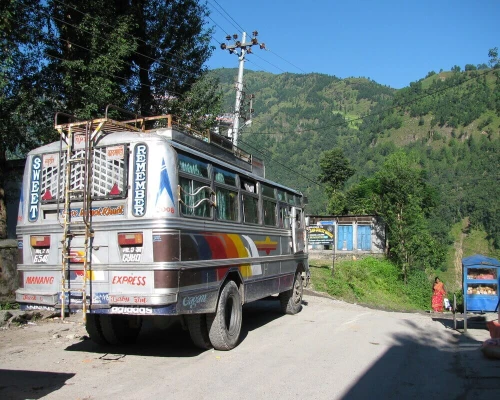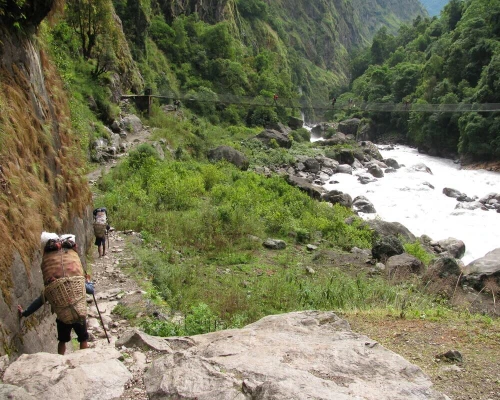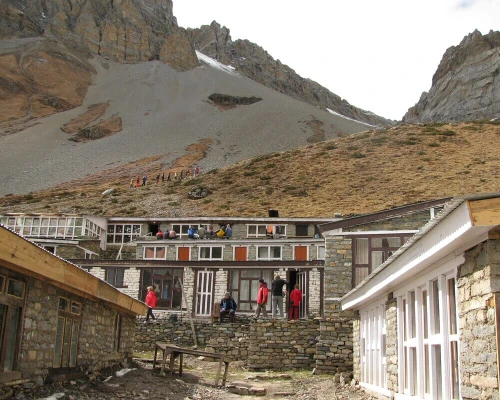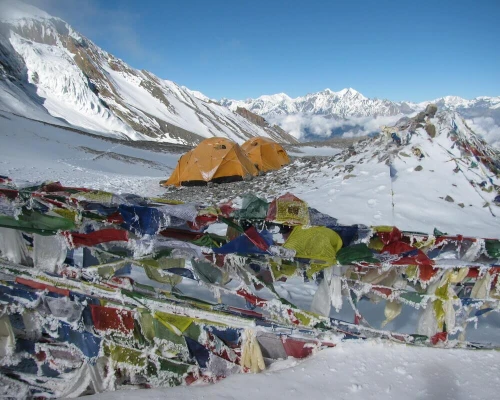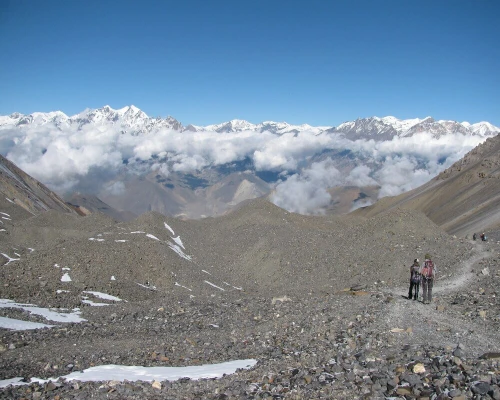Annapurna Circuit Trek undoubtedly stands out as one of the most remarkable journeys for exploring the stunning mountains and diverse ethnic groups of the Annapurna region. Every step along the trail reveals captivating vistas, charming villages, and the majestic south face of the colossal Annapurna Mountains, evoking a profound sense of joy and awe. One of the highlights of this trek is the opportunity to immerse oneself in the vibrant culture and lifestyles of the local communities. As you walk through the small villages dotting the landscape, you'll encounter a rich tapestry of traditions, languages, and customs, showcasing the remarkable diversity of the region.
The iconic Thorong La Pass at an altitude of 5,416 meters (17,769 feet) is a major highlight of the Annapurna Circuit Trek. This renowned mountain pass is not only popular among trekkers but also renowned for its stunning beauty. Located between the Manang and Mustang districts, crossing the Thorong La Pass Trek for 2026-2027 is an exhilarating experience, offering breathtaking panoramic views of the surrounding peaks and the dramatic landscapes that stretch out before you.
Embarking on the 14 day Annapurna Circuit Trek allows you to delve into the unparalleled beauty of nature, immerse yourself in the cultural tapestry of the region, and challenge yourself with high-altitude adventures. It is an unforgettable journey that will leave you with lasting memories and a deep appreciation for the wonders of the Annapurna region.
Refill yourself will all the faded energy of adventure and thrills by undertaking this journey to nature’s profoundly blessed region widely known as Annapurna Circuit.
- Pass by the picturesque yak pastures, where you can witness the local herders grazing their livestock.
- Explore Jomsom, the headquarters of the Mustang region, known for its unique cultural heritage and stunning landscapes.
- Enjoy a day at Pokhara, a popular tourist hub surrounded by beautiful lakes and offering breathtaking views of the Annapurna mountain range.
- Marvel at the spectacular views of prominent peaks such as Mt. Annapurna, Thorung Peak, Nilgiri, Chulu West, Chulu East, Tukuche Peak, Dhaulagiri, Lamjung Himal, Annapurna II, and Annapurna IV.
- Visit the beautiful Manang district, known for its traditional Tibetan Buddhist culture, ancient monasteries, and warm hospitality.
- Witness magnificent lakes, glaciers, deep gorges, and stunning waterfalls along the trekking route, adding to the natural beauty of the surroundings.
- Explore Muktinath, a sacred pilgrimage site revered by both Hindus and Buddhists. Marvel at the 108 stone faucets and the eternal flame burning for over 2,000 years.
- Cross the renowned Thorong La Pass at an impressive altitude of 5,416 meters, offering panoramic views of the surrounding mountain peaks and valleys.
- Visit Braga Monastery, the largest monastery in the Manang district, known for its ancient Buddhist artifacts, stunning architecture, and serene atmosphere.
- Explore the vibrant city of Kathmandu, known for its rich cultural heritage, ancient temples, and bustling markets. Additionally, enjoy the serene beauty of Pokhara, situated by the picturesque Phewa Lake.
- These are just a few of the many incredible experiences you can look forward to during the Annapurna Circuit Trek
What to expect in Annapurna Circuit
As you arrive at Tribhuwan International Airport, our representative will be waiting to greet you. You'll then be transferred to your hotel in Kathmandu. You can unwind and rest after your flight. Later, there will be a brief introductory meeting to discuss the itinerary. Following that, you're free to explore the local markets or simply relax for the remainder of the day. Kathmandu sightseeing is also another cultural attraction of this journey
You'll commence your journey by driving to Jagat, a small village in the Lamjung district. From there, the trekking route takes you through picturesque villages such as Dharapani, Chame, Pisang, and Manang.
In Manang, you'll have a rest day for acclimatization, which is important for the trek ahead. The trek continues from Manang to Yak Kharka and Throng Phedi. You'll then cross the famous Thorong La Pass and reach Muktinath, a sacred pilgrimage site for Hindus and Buddhists.
Annapurna Circuit Trek offers you constant views of snow-capped peaks from the start to the end of the journey. If you are a person who loves to see the authentic part of Nepal then Annapurna Circuit is the best ever option. Annapurna Circuit Trek actually covers a large area which is from Besisahar to Pokhara.
Annapurna circuit route heads to a long descent from Thorang-La pass to reach Mustang areas at the holy Muktinath Temple and Buddhist religions. From Muktinath, the path goes through the Kali Gandaki River and the beautiful desert valley to Jomsom headquarters. Thorong la Pass Trek takes you to explore the fascinating culture of Manang Valley and its old impressive monastery of Buddhist religion with ancient customs and colorful traditional life.
Difficult Level of this Journey
Annapurna Circuit Trek is generally considered to be a challenging-level trek. While it does involve high altitudes and long distances, it is manageable for individuals with proper preparation and a reasonable level of fitness. The most challenging part of the trek is crossing the Thorong La Pass, which reaches an elevation of 5,416 meters (17,769 feet). At this altitude, there is a risk of altitude sickness, so it is important to take necessary precautions and allow your body enough time to acclimatize to the changing altitudes. Our itinerary is designed to provide ample time for acclimatization, ensuring your safety and well-being.
Throughout the trek, you will be accompanied by experienced guides who are familiar with the trail and will provide guidance and support. The trail is well-marked, making it easier to navigate. However, it is essential to be prepared for long days of hiking, as some sections of the trek require several hours of walking.
Prior physical preparation, including cardiovascular exercises and endurance training, will greatly contribute to your overall trekking experience. It is advisable to consult with your healthcare provider and undertake a training regimen before embarking on the trek.
With the right mindset, preparation, and support from our team, you can successfully complete the Annapurna Circuit Trek and enjoy the stunning landscapes and cultural experiences along the way.
When One Should Book This Adventure
The best time to book the Annapurna Circuit Trek is during the spring (March to May) and autumn (September to November) seasons. These months offer the most favorable weather and optimal trekking conditions. During the spring season, the hills and valleys come alive with vibrant colors as rhododendrons and other flowers bloom. The landscape becomes even more stunning, creating a picturesque backdrop for your trek.
In autumn, the weather is generally pleasant with mild temperatures and clear skies. The refreshing breeze makes trekking during the day comfortable, and you can enjoy unobstructed views of the mountains and surrounding landscapes. It's important to note that the winter months (December to February) can be extremely cold, with heavy snowfall in higher elevations. Trekking during this time can be challenging and requires specialized equipment and experience in winter trekking.
Similarly, the summer months (June to August) are the monsoon season in Nepal, characterized by heavy rainfall and high humidity. The trails can be muddy and slippery, and there is an increased risk of landslides. Trekking during this time is not recommended due to safety concerns and limited visibility of the mountains. By planning your Annapurna Circuit Trek during the spring or autumn, you can make the most of the favorable weather conditions, enjoy the stunning landscapes, and have a memorable trekking experience.
For further information or assistance regarding the Annapurna Circuit Trek or any adventure in Nepal, contact Nepal Nomad. We can provide detailed trek itineraries that can be customized to your preferences. Reach out to Nepal Nomad for a memorable and fulfilling adventure in the Annapurna region.



